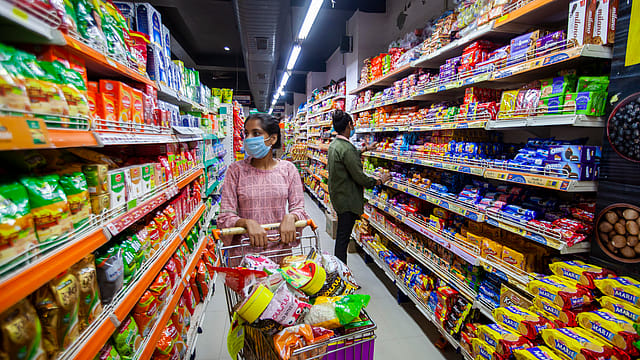Inflation poses significant challenges for FMCG firms: ITC
ADVERTISEMENT

The unprecedented inflationary headwinds pose significant challenges in the near term and remain a key monitorable for the fast moving consumer goods industry, FMCG-to-hotel conglomerate ITC said in its annual report.
During the year, the FMCG sector witnessed moderation in growth mainly due to subdued demand conditions especially in rural markets, high inflation eating into household budgets and high base effect in certain categories such as staples and convenience foods, the report says.
Persistently elevated and sticky inflation has emerged as a key concern globally, ITC warns, adding the year saw an unprecedented increase in prices of key inputs such as edible oils, packaging materials, soap noodles, fuel, logistics, etc., which exerted considerable pressure on margins.
Even prior to the ongoing Russia-Ukraine conflict, inflation started surging in many economies due to soaring commodity prices and pandemic-induced supply-demand imbalances. This led central banks such as the U.S. Federal Reserve, European Central Bank and the Bank of England to bring forward the timing of tightening monetary conditions in their respective countries. The situation was exacerbated with the ongoing Russia-Ukraine conflict that caused sharp escalation and volatility in agri, fuel and crude-linked commodity prices.
As per the IMF, global inflation in 2022 is projected at 7.4% -- the highest in 26 years.
ITC cautions that the amalgam of recent events, including the latest surge in Covid-19 cases in certain regions, continued geopolitical tensions, inflationary headwinds on the back of commodity super cycles & "greenflation", and extended supply chain disruptions, pose significant downside risks to global economic prospects in the year ahead.
January 2026
Netflix, which has been in India for a decade, has successfully struck a balance between high-class premium content and pricing that attracts a range of customers. Find out how the U.S. streaming giant evolved in India, plus an exclusive interview with CEO Ted Sarandos. Also read about the Best Investments for 2026, and how rising growth and easing inflation will come in handy for finance minister Nirmala Sitharaman as she prepares Budget 2026.
The financial year 2021-22 began with the second wave of the pandemic followed by a sharp drop in its intensity, which aided smart recovery in economic activity that reached pre-pandemic levels towards the end of the second quarter. Even as economic prospects started looking up, the country was hit hard by the third wave with new cases rising exponentially across major cities and halting the recovery momentum. Just as the third wave had abated in India, geopolitical tensions in Europe sparked off a fresh round of uncertainty in the operating environment.
While the Indian economy rebounded during the year growing by 8.9%, ITC warns the recovery was uneven with different sectors of the economy and income classes experiencing varying degrees of impact.
Private consumption remained subdued and below its pre-pandemic growth path, rural demand witnessed a marked slowdown and private capital expenditure did not see any material improvement although signs of an incipient revival emerged in certain sectors, says ITC.
The owner of the Savlon brand says its health and hygiene personal care products witnessed demand volatility in line with varying intensity of the pandemic, while remaining significantly above pre-pandemic levels.
Discretionary categories witnessed strong growth on a favourable base and surpassed pre-Covid levels driven by improved mobility and progressive return to normalcy, the cigarette maker said.
